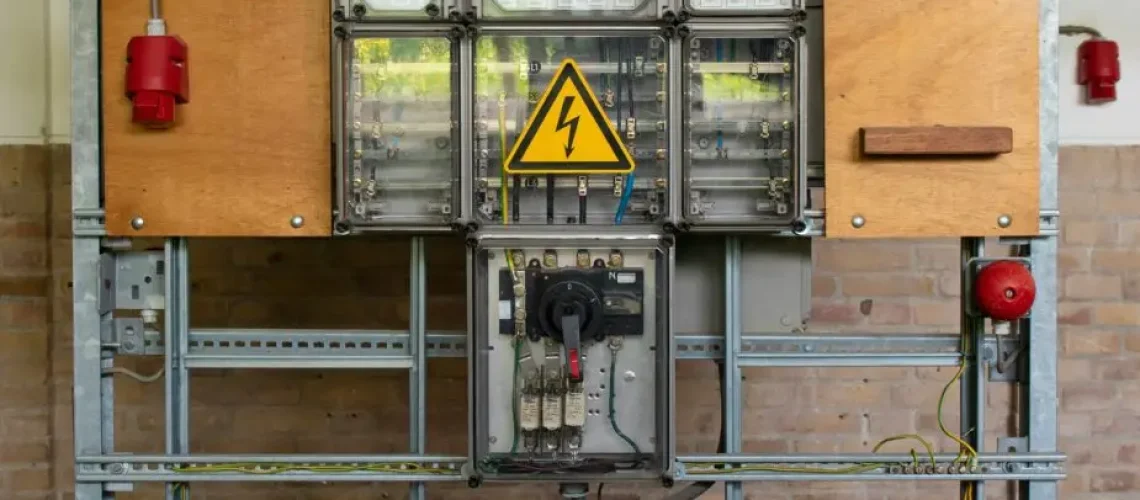Your home’s electrical system is a vital component of daily life, powering everything from lights to appliances. However, beneath the surface of wires and circuits lies a crucial safety feature that often goes unnoticed: grounding. Proper grounding is essential for protecting your family and home from electrical hazards. In this guide, we’ll delve into what grounding is, why it’s vital, common issues in older homes, and how to ensure your electrical system is safe and up to modern standards.
What Is Grounding and Why Is It Crucial?
Grounding refers to the process of connecting an electrical system to the earth, creating a safe path for excess electricity to flow in the event of a fault, such as a short circuit or a lightning strike. Without grounding, your home’s electrical system lacks a fail-safe, increasing the risk of electrical shock, fires, and damage to appliances.
The Benefits of Proper Grounding
- Prevents Electrical Shock
Grounding ensures that stray electricity is directed safely into the earth, protecting people from shock when handling appliances or touching metal surfaces connected to the electrical system. - Reduces the Risk of Electrical Fires
Surges and faults can generate excessive heat, potentially causing fires. A properly grounded system safely dissipates this energy. - Protects Sensitive Electronics
Modern devices are designed to work with grounded systems. Grounding stabilizes voltage levels, shielding sensitive equipment like computers, TVs, and smart home devices from electrical surges. - Ensures Code Compliance
Grounding is required by electrical codes to ensure a safe and functional system. Homes with improper grounding may face issues during inspections or real estate transactions.
Common Grounding Issues in Older Homes
Many older homes, particularly those built before the 1960s, were not designed with modern grounding standards in mind. Here are some common problems:
1. Two-Prong Outlets
Two-prong outlets lack grounding and are a clear sign of an ungrounded electrical system. They pose safety risks, especially with modern appliances that require three-prong outlets for proper grounding.
2. Ungrounded Circuits
Even if a home has three-prong outlets, the wiring behind them may not be grounded. This creates a false sense of security and leaves the home vulnerable to electrical hazards.
3. Aging or Damaged Grounding Systems
Over time, grounding wires and rods can corrode, become loose, or fail due to poor installation or physical damage, reducing their effectiveness.
4. Outdated Wiring Systems
Homes with knob-and-tube or aluminum wiring often lack proper grounding. These outdated systems increase the risk of fires and shocks and often require a complete upgrade to meet modern standards.
Steps to Ensure Proper Grounding
If you’re unsure about the condition of your home’s electrical system, taking these steps can help ensure safety and compliance:
1. Schedule a Professional Inspection
A licensed electrician or certified home inspector can assess your electrical system for grounding issues. They’ll check outlets, wiring, and the electrical panel for compliance with modern safety standards.
2. Upgrade to Grounded Outlets
Replacing two-prong outlets with three-prong outlets is an essential safety upgrade. However, it’s critical to ensure the circuit is grounded before swapping outlets, as simply replacing them doesn’t solve the problem.
3. Install Ground Fault Circuit Interrupters (GFCIs)
GFCI outlets offer additional protection by shutting off power when a ground fault is detected. These are especially important in moisture-prone areas like bathrooms, kitchens, basements, and outdoor spaces.
4. Update the Electrical Panel and Wiring
If your home’s grounding system is outdated or nonexistent, it may require a comprehensive upgrade. This includes installing grounding rods, replacing old wiring, and updating the electrical panel to modern standards.
5. Test for Proper Grounding Regularly
Even if your system was installed correctly, periodic testing ensures it remains effective. An electrician can perform grounding tests during routine maintenance to confirm that your system is functioning as intended.
The Role of Home Inspections
A professional home inspection is a vital step in identifying grounding issues, especially in older homes. Inspectors evaluate key components such as:
- Grounding connections in the electrical panel.
- The presence and functionality of GFCI and AFCI (Arc Fault Circuit Interrupter) protection.
- The condition of wiring, outlets, and grounding rods.
A detailed inspection report will highlight any deficiencies and recommend necessary repairs or upgrades to enhance safety.
Conclusion
Proper grounding is more than just a technical requirement—it’s a fundamental safety feature that protects your family, home, and electrical devices. Whether you’re living in an older home or building a new one, ensuring your electrical system is properly grounded is a critical investment in long-term safety and peace of mind.
If you suspect grounding issues or want to upgrade your system, consult a licensed electrician or certified home inspector. By addressing grounding concerns today, you can safeguard your home against future electrical hazards and enjoy a safer living environment.


